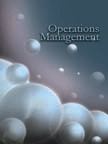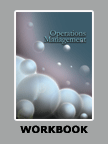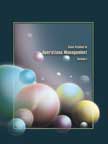Mahindra & Mahindra: Implementing BPR




|
|
ICMR HOME | Case Studies Collection
Case Details:
Case Code : OPER008
Case Length : 12 Pages
Period : 1990 - 2001
Organization : Mahindra & Mahindra
Pub Date : 2005
Teaching Note : Available
Countries : Japan
Industry : Automobile
To download Mahindra & Mahindra: Implementing BPR case study
(Case Code: OPER008) click on the button below, and select the case from the list of available cases:

Price:
For delivery in electronic format: Rs. 300;
For delivery through courier (within India): Rs. 300 + Rs. 25 for Shipping & Handling Charges
» Operations Case Studies
» Case Studies Collection
» ICMR HOME
» View Detailed Pricing Info
» How To Order This Case
» Business Case Studies
» Case Studies by Area
» Case Studies by Industry
» Case Studies by Company
Please note:
This case study was compiled from published sources, and is intended to be used as a basis for class discussion. It is not intended to illustrate either effective or ineffective handling of a management situation. Nor is it a primary information source.
|
|
<< Previous
Background Note
|
Mahindra & Mahindra Ltd. (M&M) was the flagship company of the Mahindra group,
one of the top ten industrial houses in India. The company's history dates back
to 1945, when two brothers, J.C.Mahindra and K.C.Mahindra, decided to start a
business of general-purpose utility vehicles. The brothers formed a company,
Mahindra & Mohammed Ltd., in association with their friend Ghulam Mohammed. In
October 1947, the first batch of 75 jeeps was released for the Indian market. In
1948, the company was renamed Mahindra & Mahindra Ltd. Over the next few
decades, the group promoted many companies in areas as diverse as hotels,
financial services, auto components, information technology, infrastructure
development and trading to name a few (Refer Exhibit I for M&M's history).
|
|
Though M&M had established itself in the markets and was among the leading
players in many of the segments it operated in, it realized that some of its
businesses were not closely related to its core business. This realization
marked the beginning of the biggest change exercise since the company's
inception.
|
|
In 1994, a
major restructuring exercise was initiated as part of a BPR program. M&M
introduced a new organizational model, in which various divisions and
companies were regrouped into six distinct clusters of related
businesses, each headed by a president. M&M's core activities,
automotive and tractors were made autonomous business units. The other
activities of the group were organized into infrastructure, trade and
financial services, telecommunication and automotive components.
According to company sources, the whole exercise was intended to develop
a conceptual map to provide direction for the future growth of various
business lines. It was decided that, in future, the group would confine
its expansion to the identified thrust sectors. |
The two main operating divisions of the company were the
automotive division, which manufactured UVs and LCVs, and the farm equipment
division, which made tractors and farm implements. The company employed over
17,000 people and had six state-of-the-art manufacturing facilities spread over
500,000 square meters.
The plants were situated at Kandivili (MUVs and Tractors), Nasik (MUVs),
Zaheerabad (LCVs, Voyager, three-wheelers), Igatpuri (Engines) and Nagpur
(Implements and tractors)...
Excerpts >>
|
|



